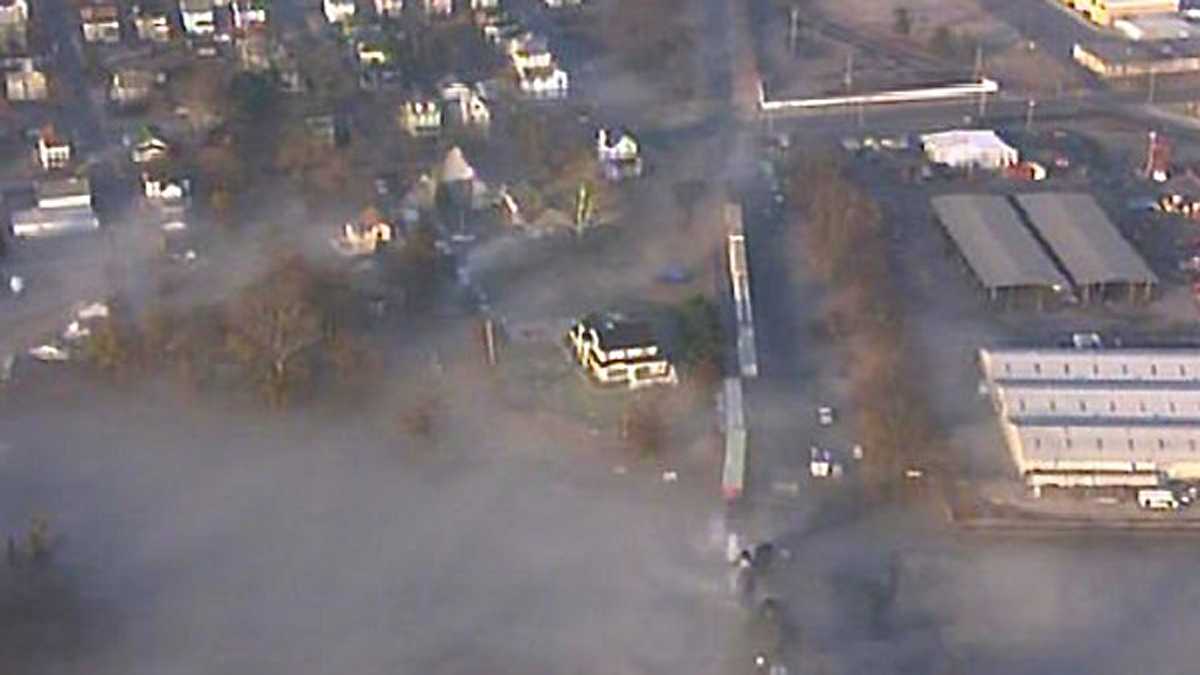Commentary: What I learned by living through Paulsboro’s 2012 toxic-chemical spill

Vinyl chloride gas covers Paulsboro
A few years ago, I was home with my two children when a plume of vinyl chloride, a toxic and highly carcinogenic chemical, drifted through my New Jersey neighborhood. My sons began to complain of watery eyes, burning throats, and head pain, and I felt dizzy, tired, and clumsy. I found out on the news that 23,000 gallons of vinyl chloride had spilled following a train derailment in a nearby town.
I will never forget that day. It sent me on a journey to learn about toxic chemicals — and how they are stored, transported, and regulated in the U.S. What I learned is disturbing.
More than one hundred million Americans across the country live near factories, water-treatment plants, and other industrial sites that make or use dangerous chemicals such as vinyl chloride. These are high-risk zones. People are in danger of injury, illness, or even death in the case of leaks, spills, explosions, or sabotage at these facilities.
The Environmental Protection Agency (EPA) has proposed a long-awaited safety rule for chemical facilities. Unfortunately, the EPA’s proposed rule fails to require a switch to safer chemicals and technology where they are available and affordable — which is in many instances.
Many safer alternatives to hazardous chemicals exist; but because facilities are not required to use safer chemicals or technologies when available, they continue to do what they’re doing, which involves placing millions of children at risk where they learn and play. One in three American schoolchildren attends a school that sits within a vulnerability zone. This means that one-third of all children are at risk of being exposed to explosions, fires, and toxic chemicals throughout every school day.
Dangerous facilities are within walking distance of many of our homes and schools. They can be made safer. The EPA must require chemical facilities to switch to safer chemicals and technologies that are both available and affordable.
I hope that in the future, no mother will have to watch her children suffer from the health impacts of a chemical disaster, as I have. Please, join me in raising your voice for safer chemical facilities, before the EPA makes its final decision about this new rule.
Nearly two years after Paulsboro spill, health concerns linger 8/7/14
Paulsboro Plaintiffs’ Lawyers Hopeful Despite String of Setbacks 2/25/16
Trisha Sheehan is the eastern deputy field manager of Moms Clean Air Force, a project of Environmental Defense Fund.
________________________________________________________
NJ Spotlight, an independent online news service on issues critical to New Jersey, makes its in-depth reporting available to NewsWorks.
WHYY is your source for fact-based, in-depth journalism and information. As a nonprofit organization, we rely on financial support from readers like you. Please give today.




